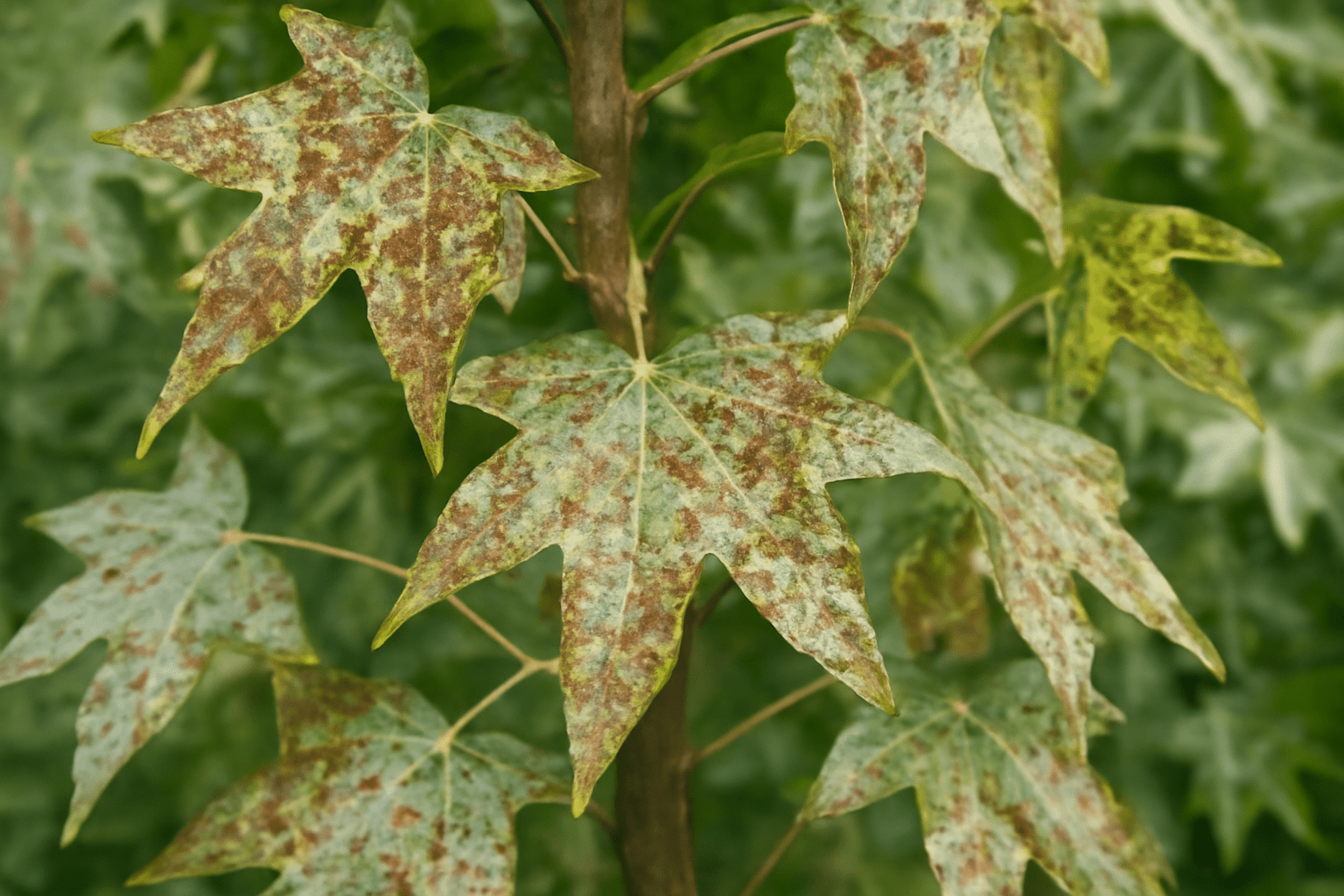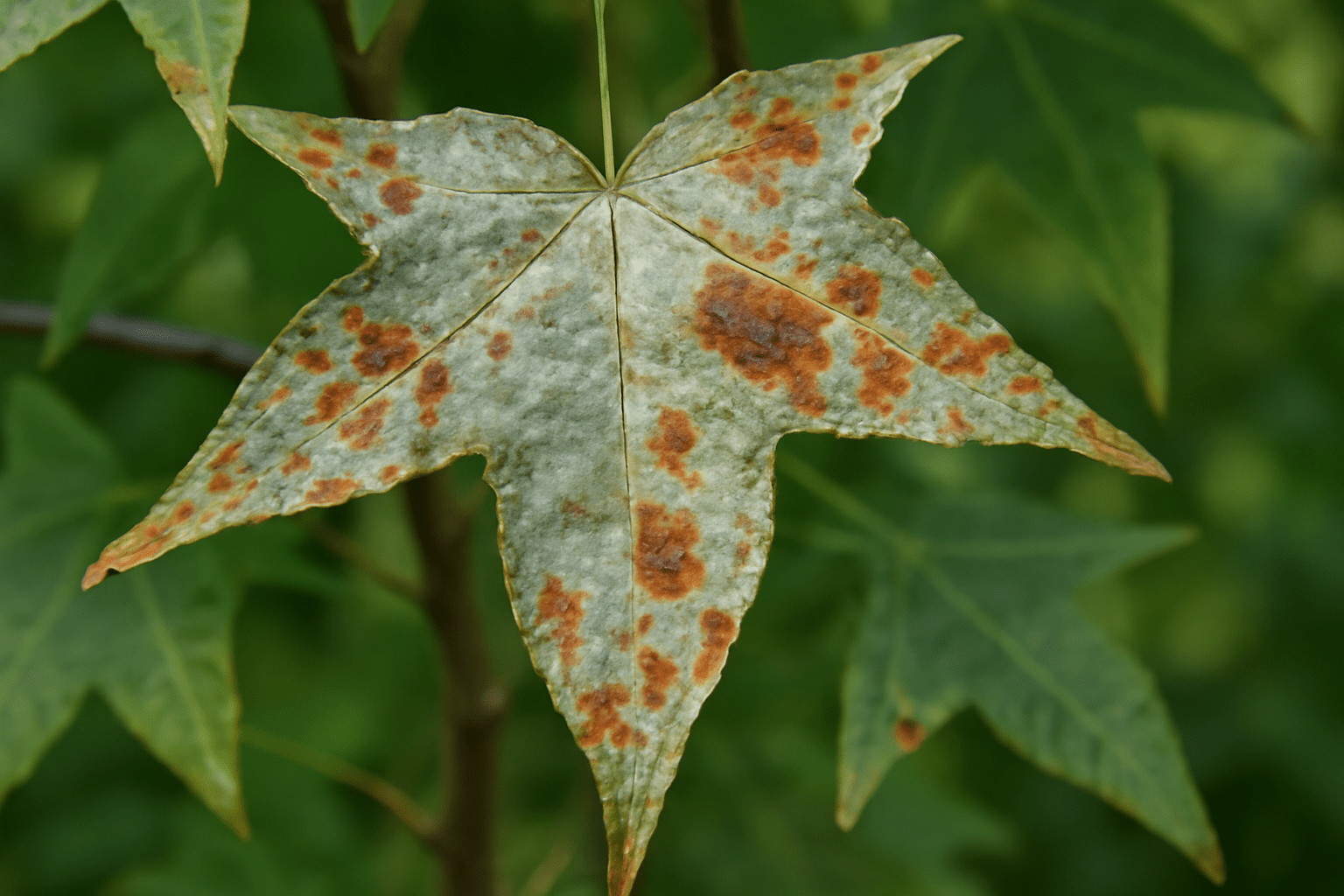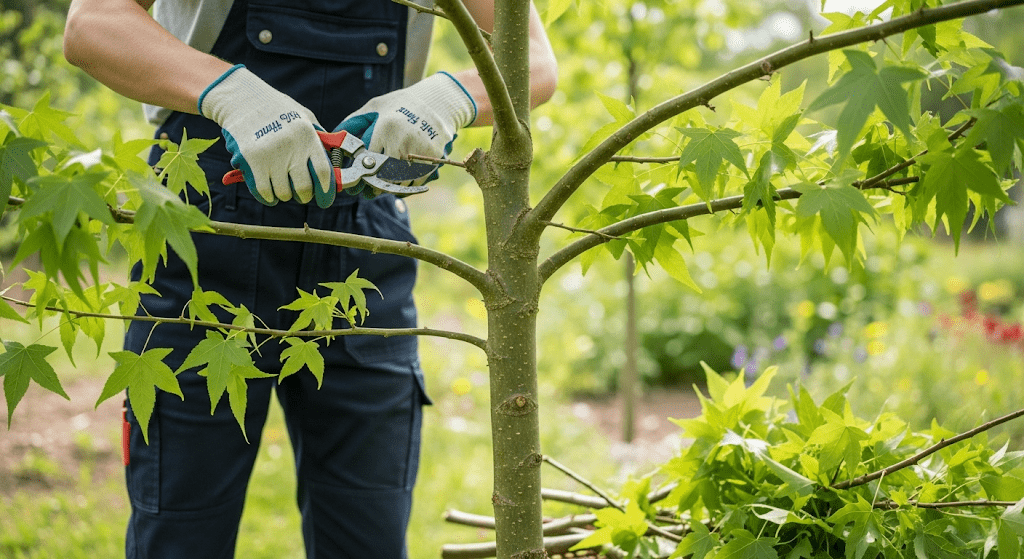
Slender Silhouette Sweetgum Problems: Common Issues and How to Solve Them for a Healthier Tree
Do you have a Slender Silhouette Sweetgum tree in your yard that isn’t thriving as expected? 😟 Whether it’s stunted growth, pesky pests, or unexpected leaf damage, these common slender silhouette sweetgum problems can be frustrating for any homeowner or gardener. While this tree is known for its slender form and vibrant leaves, it can face its fair share of issues if not cared for properly.
But don’t worry—there’s hope! 🌱 In this guide, we’ll walk you through the most common problems that can affect your sweetgum tree, providing simple, actionable solutions to help it flourish. From understanding pests and fungal infections to ensuring your tree gets the right nutrients and protection, we’ve got you covered.
By the end of this article, you’ll feel more confident about addressing these challenges, ensuring your slender silhouette sweetgum thrives year-round. Ready to dive in? Let’s get started!
Table of Contents
Toggle🌿 Common Problems Faced by Slender Silhouette Sweetgum Trees 🌿
While the Slender Silhouette Sweetgum is a beautiful and resilient tree, it’s not immune to certain challenges. Whether you’re a seasoned gardener or a new tree owner, understanding the potential issues can help you take proactive steps to keep your tree healthy and thriving. Let’s dive into the most common problems and how to spot them early. 🌱

🐛 Pest Infestation 🐛
One of the biggest concerns for sweetgum trees is pest infestations. Common culprits include aphids, scale insects, and caterpillars. These pests can damage leaves and stunt growth, making the tree less vibrant.
🌱 How to spot pests: 🌱
- 🌿 Look for deformed leaves, sticky residue, or visible insects on the tree. 🌿
- 🍃 Aphids may also leave a black sooty mold on the leaves. 🍃
🍀 Solution: 🍀
- 🌸 Use organic treatments like neem oil or insecticidal soap to control pests. 🌸
- 🌷 Encourage beneficial insects like ladybugs to help keep pest numbers in check. 🐞

🍂 Fungal Infections 🍂
Fungal diseases, such as powdery mildew and anthracnose, can affect sweetgum trees. These diseases thrive in humid conditions and cause unsightly leaf spots, premature leaf drop, and can even weaken the tree over time.
🌱 How to spot fungal infections: 🌱
- 🍃 Brown or black spots on leaves, curling edges, or premature leaf fall. 🍃
- 🌿 White powdery coating on leaves (common in powdery mildew). 🌿
🍀 Solution: 🍀
- 🌸 Apply fungicides, preferably organic ones, like neem oil or copper-based fungicides. 🌸
- 🌷 Prune infected branches to improve air circulation and reduce humidity around the tree. ✂️

💧 Water Stress and Root Rot 💧
Water stress can occur when sweetgum trees don’t get enough or too much water. Overwatering, especially in poorly-draining soil, can lead to root rot, a deadly condition that weakens the tree’s roots.
🌱 How to spot water stress: 🌱
- 🍃 Yellowing leaves and wilting, especially during dry spells. 🍃
- 🌿 If the soil stays soggy for too long, root rot could be an issue. 🌿
🍀 Solution: 🍀
- 🌸 Ensure the tree is planted in well-draining soil. 🌸
- 🌷 Water consistently but avoid over-watering. Make sure the roots aren’t sitting in water for too long. 💦

🍃 Nutrient Deficiency 🍃
A lack of essential nutrients can cause the tree to show signs of stress, including yellowing leaves and poor growth. Sweetgums often need extra nitrogen, magnesium, and iron to stay vibrant.
🌱 How to spot nutrient deficiencies: 🌱
- 🍃 Yellowing leaves with green veins (nitrogen or iron deficiency). 🍃
- 🌿 Poor leaf development and weak growth. 🌿
🍀 Solution: 🍀
- 🌸 Fertilize with a balanced, slow-release tree fertilizer. 🌸
- 🌷 Conduct a soil test to pinpoint specific deficiencies and adjust accordingly. 🌿

❄️ Winter Damage ❄️
Sweetgum trees can suffer from winter damage, especially in areas with harsh frost or sudden temperature drops. The cold can cause the bark to crack, and the leaves may become brown and brittle.
🌱 How to spot winter damage: 🌱
- 🍃 Brown, wilted leaves in early spring. 🍃
- 🌿 Cracked or damaged bark, particularly at the base of the tree. 🌿
🍀 Solution: 🍀
- 🌸 Protect your sweetgum tree by wrapping the trunk with burlap during extreme cold spells. 🌸
- 🌷 Add a thick layer of mulch around the base to insulate the roots during winter. 🌨️

By identifying these common issues early on, you’ll be able to take the right steps to protect and nurture your Slender Silhouette Sweetgum. With regular care, your tree will thrive, bringing beauty and shade to your yard for years to come! 🌳
🌿 How to Solve Common Slender Silhouette Sweetgum Problems 🌿
Now that we’ve covered the most common problems faced by your Slender Silhouette Sweetgum, let’s dive into how to solve them. With the right care, you can keep your tree healthy and looking beautiful year-round. Here are some practical, actionable steps to tackle those pesky issues! 🌱

🐛 How to Control Pests on Your Sweetgum Tree 🐛
Pests are one of the most common challenges, but they don’t have to take over your tree. Here’s how you can manage them effectively:
🌱 Solution: 🌱
- 🌿 Neem Oil or Insecticidal Soap: These organic treatments are safe for the tree and effective at controlling aphids, scale insects, and caterpillars. Spray them on the leaves and branches, focusing on the undersides where pests often hide. 🌿
- 🐞 Beneficial Insects: Encourage natural predators like ladybugs and lacewings. They’ll help keep the pest population under control. 🐞
- 🌸 Regular Inspections: Check your tree regularly for signs of pests and take action immediately. Early intervention is key to preventing a major infestation. 🌸
🍂 How to Treat Fungal Infections 🍂
Fungal diseases can spread quickly if left untreated, so it’s important to act fast.
🌱 Solution: 🌱
- 🌿 Fungicides: Use a fungicide, such as neem oil or copper-based products, to treat fungal infections. These will help prevent the spread of the disease and keep the tree healthy. 🌿
- ✂️ Prune Infected Areas: Trim away any diseased branches or leaves to prevent further spread of the fungus. Be sure to sterilize your pruning tools to avoid spreading the infection. ✂️
- 🌿 Improve Airflow: Proper spacing between trees and pruning for better air circulation can help reduce humidity around your sweetgum tree, which makes it less inviting to fungi. 🌿
💧 How to Prevent Water Stress and Root Rot 💧
Water issues—whether too much or too little—are a major cause of tree stress. Here’s how you can manage water effectively:
🌱 Solution: 🌱
- 🌾 Proper Drainage: Ensure that your sweetgum tree is planted in well-draining soil to prevent water from pooling around the roots. Raised beds or planting in slightly elevated areas can help with drainage. 🌾
- 💦 Watering Schedule: Water your tree regularly, but avoid over-watering. The soil should be moist, not soggy. If your soil doesn’t drain well, consider adding organic material to improve its texture. 💦
- 🌳 Mulching: Mulch around the base of the tree to help retain moisture and regulate soil temperature. But make sure the mulch doesn’t touch the trunk to avoid rot. 🌳
🍃 How to Fix Nutrient Deficiencies 🍃
A healthy sweetgum tree needs the right balance of nutrients. If your tree shows signs of nutrient deficiency, here’s how you can give it a boost:
🌱 Solution: 🌱
- 🌿 Fertilize: Apply a balanced fertilizer that’s rich in nitrogen, iron, and magnesium. This will help correct the deficiencies and promote healthy leaf and root development. 🌿
- 🧪 Soil Testing: Conduct a soil test to identify specific nutrient deficiencies. This allows you to choose the right fertilizer for your tree’s needs. 🧪
- 🍂 Organic Fertilizers: Consider using organic fertilizers like compost or fish emulsion to improve soil health and provide a slow-release nutrient source. 🍂
❄️ How to Protect Your Tree from Winter Damage ❄️
Winter damage can weaken your sweetgum tree, but with a little preparation, you can protect it from the cold.
🌱 Solution: 🌱
- ❄️ Wrap the Trunk: During extremely cold weather, protect the tree’s trunk from frost by wrapping it with burlap. This helps insulate the bark from freezing temperatures. ❄️
- 🌨️ Mulch: Add a thick layer of mulch around the base of the tree, but avoid piling it directly against the trunk. This helps regulate soil temperature and insulates the roots during winter. 🌨️
- 🌳 Cold-Hardy Varieties: If you live in a colder region, consider planting cold-hardy sweetgum varieties that are better equipped to handle low temperatures. 🌳
By following these simple steps, you can address the Slender Silhouette Sweetgum problems you’re facing and help your tree grow stronger and healthier. Consistent care, regular inspections, and timely interventions will ensure your sweetgum continues to thrive for many years to come! 🌳
🌿 Proactive Care Tips for a Healthier Slender Silhouette Sweetgum 🌿
Caring for your Slender Silhouette Sweetgum goes beyond solving problems—it’s about taking proactive steps to prevent issues and ensure long-term health. Here are some easy, effective care tips that will keep your tree looking vibrant and thriving throughout the year! 🌱

✂️ Regular Pruning for Healthier Growth ✂️
Pruning is essential for maintaining the shape and health of your sweetgum tree. Regular pruning helps remove dead or diseased branches, encourages better airflow, and improves the tree’s overall structure.
🌱 Solution: 🌱
- 🌳 When to Prune: The best time to prune is in late winter or early spring before the tree begins its new growth cycle. Avoid pruning during active growth to prevent stress on the tree. 🌳
- ✂️ How to Prune: Trim any dead, broken, or crossing branches. Focus on creating an open canopy that allows sunlight and air to reach the inner parts of the tree. Use clean, sharp pruning tools to make smooth cuts. ✂️
🌞 Seasonal Care for Year-Round Health 🌞
Each season presents different challenges and opportunities for your sweetgum. Tailoring your care to the season ensures the tree stays in top shape throughout the year.
🌱 Spring: 🌱
- 🌸 Fertilize: Apply a balanced, slow-release fertilizer to give your tree a nutrient boost as it begins to grow.
- 💧 Watering: Ensure the tree receives enough water as the soil dries out, especially in the early growing season. 🌸
☀️ Summer: ☀️
- 🐛 Monitor for Pests: Keep an eye out for common pests like aphids and caterpillars. Early detection makes control easier.
- 💧 Consistent Watering: During hot months, maintain a consistent watering schedule to prevent water stress and keep the tree hydrated. 🌞
🍂 Fall: 🍂
- 🌳 Mulch: Add a layer of mulch around the base of the tree to insulate the roots and protect them from the cold.
- 🍂 Inspect for Fungal Diseases: Look for signs of fungal infections, such as spots on the leaves or moldy areas. Treat them promptly. 🍂
❄️ Winter: ❄️
- 🌨️ Wrap the Trunk: In colder climates, protect the trunk from frost with burlap or tree wraps.
- 🥶 Check for Damage: After winter storms, check for any broken branches or other damage that may need attention. ❄️
🌿 Monitor Tree Health Regularly 🌿
Regular inspections are one of the simplest and most effective ways to ensure your sweetgum stays healthy.
🌱 Solution: 🌱
- 🐛 Check for Pests and Diseases: Look for common signs of pests like sticky residue or wilting leaves, and fungal symptoms like spots or powdery patches.
- 🌱 Inspect the Soil: Make sure the soil is draining properly and that there are no signs of overwatering or root rot.
- 👀 Observe the Tree’s Appearance: Keep an eye on leaf color, growth patterns, and the overall shape of the tree. If anything seems off, take action early. 👀
🌳 Ensure Proper Spacing and Planting 🌳
The Slender Silhouette Sweetgum is known for its narrow shape, making it perfect for smaller spaces. However, even with its compact nature, it still needs room to grow. Proper planting and spacing are essential for long-term health.
🌱 Solution: 🌱
- 🌿 Spacing: Ensure your sweetgum tree has enough space to grow both vertically and horizontally. Plant it at least 10 feet away from other trees, buildings, or structures.
- 🌱 Planting Depth: When planting, make sure the root collar (where the tree meets the soil) is level with the surrounding ground. Avoid planting the tree too deep, as this can lead to root rot. 🌱
🌸 Encourage a Strong Root System 🌸
A healthy root system is key to supporting your tree’s overall health. Strong roots help the tree access nutrients, water, and stay stable during storms.
🌱 Solution: 🌱
- 💧 Watering Deeply: When watering, aim to saturate the root zone rather than just the surface. Deep watering encourages roots to grow deeper and stronger.
- 🌳 Mulching: Apply a layer of mulch around the base of the tree, but keep it away from the trunk. Mulch helps retain moisture and provides nutrients as it decomposes. 🌳
By following these proactive care tips, you’ll be setting your Slender Silhouette Sweetgum up for long-term success. Regular maintenance, seasonal adjustments, and early problem detection will ensure your tree stays healthy, beautiful, and strong year after year. 🌿
🌿 Final Thoughts 🌿
Your Slender Silhouette Sweetgum tree is a beautiful addition to any yard, but it requires a little extra attention to thrive. By understanding the common issues it may face and taking proactive steps to address them, you can ensure your tree stays healthy, vibrant, and resilient throughout the seasons. 🌱

From managing pests and fungal infections to providing proper water, nutrients, and protection from the elements, your sweetgum will reward you with stunning foliage and a slender silhouette that will enhance your landscape for years to come. 🌳
Remember, regular care and early intervention are key to preventing larger problems down the road. With these tips, you’ll be well on your way to growing a healthier, happier Slender Silhouette Sweetgum. Happy gardening! 🌸
Frequently Asked Questions (FAQ)
What are the most common problems with Slender Silhouette Sweetgum trees?
The most common issues include pest infestations (like aphids and scale insects), fungal infections (such as powdery mildew), water stress (over or underwatering), and nutrient deficiencies. Regular inspections and timely treatments can help prevent or address these problems. 🌿
How can I prevent pests from damaging my Slender Silhouette Sweetgum?
To prevent pests, regularly inspect your tree for signs of infestation, such as sticky residue or deformed leaves. Use organic insecticides like neem oil or insecticidal soap, and encourage beneficial insects like ladybugs to help control pests naturally. 🐞
What should I do if my Slender Silhouette Sweetgum has yellowing leaves?
Yellowing leaves can be a sign of nutrient deficiency or water stress. Ensure your tree has adequate watering and well-draining soil, and apply a balanced fertilizer if necessary. A soil test can help identify specific nutrient deficiencies. 💧
How do I treat fungal infections on my Slender Silhouette Sweetgum?
Fungal infections like powdery mildew can be treated with fungicides such as neem oil or copper-based solutions. Prune infected leaves to improve air circulation, and avoid overwatering to reduce humidity around the tree. 🍂
Can I grow a Slender Silhouette Sweetgum in a pot?
Yes, you can grow it in a pot, but ensure it has adequate space and proper drainage. Regular watering and feeding will be essential for keeping the tree healthy, and you’ll need to repot it every few years to prevent root congestion. 🌱
How can I protect my Slender Silhouette Sweetgum from winter damage?
To protect your sweetgum from frost, wrap the trunk with burlap and add a thick layer of mulch around the base to insulate the roots. This helps shield the tree from freezing temperatures and sudden cold snaps. ❄️
How do I know if my Slender Silhouette Sweetgum is suffering from root rot?
Signs of root rot include wilting, yellowing leaves, and a foul smell coming from the soil. Ensure your tree is planted in well-draining soil and avoid overwatering to prevent root rot. If you suspect root rot, inspect the roots and remove any damaged ones. 🌾
What is the best way to prune my Slender Silhouette Sweetgum tree?
Prune your sweetgum tree in late winter or early spring before new growth starts. Remove dead, diseased, or crossing branches to maintain an open canopy and improve airflow. Always use clean, sharp pruning tools for a smooth cut. ✂️
